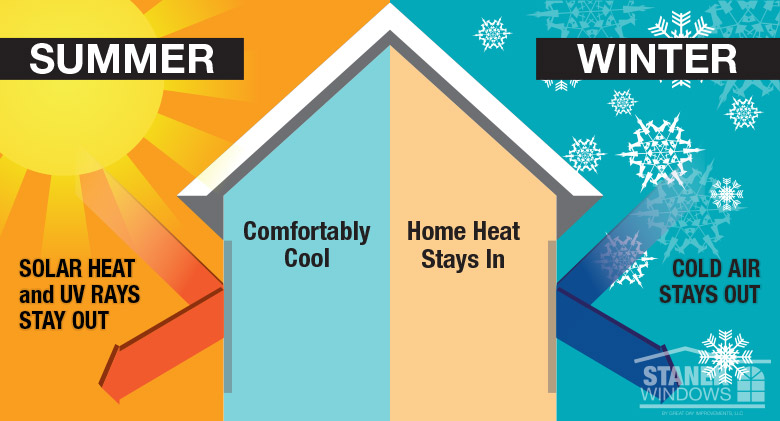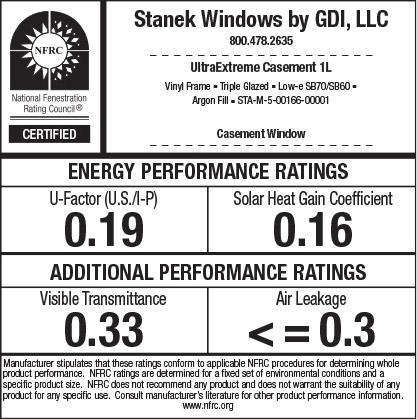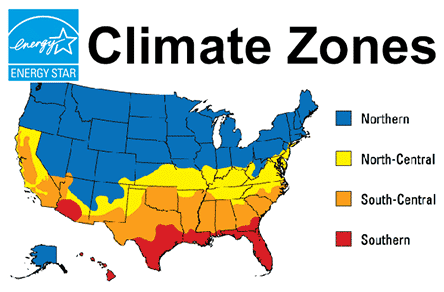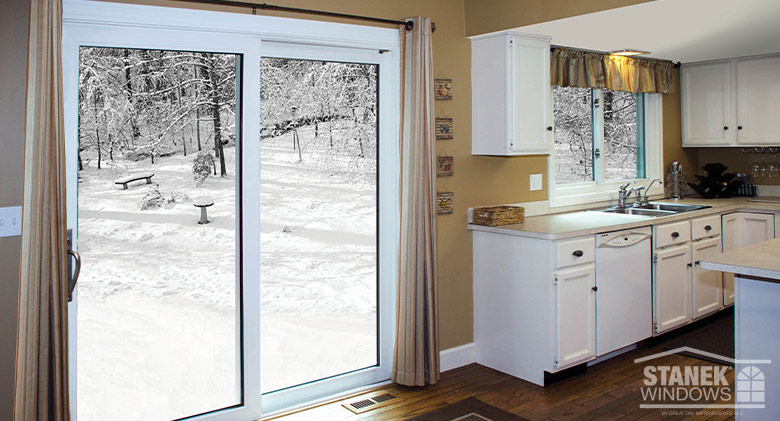In this post, you will learn…
- How windows are given energy efficient ratings
- Why you should buy energy-efficient windows
- What goes into buying energy-efficient windows
Energy efficiency is a common buzzword today, but what does it really mean? And how does energy efficiency affect your window purchase? Discover everything you need to know about energy-efficient windows before you buy them for your home.
How Do Standard Windows and Energy-efficient Windows Differ?
The anatomy of an energy-efficient window is different than that of a standard window. The materials used differ in various ways.

Below are some advanced features of energy-efficient windows:
- Multiple paned to better insulate your home, protect against impact, and provide noise reduction. Energy-efficient windows are made with two and sometimes even three panes of glass.
- Special coatings keep heat inside during the winter and outside during the summer by reflecting infrared light. These coatings can also reflect ultraviolet light, which helps prevent the furniture in your home from fading.
- Multiple panes of glass with air or gas in between them provide better insulation than a single pane of glass.
- Made with low-maintenance framing materials, such as fiberglass, vinyl, or composite, to reduce heat transfer and help insulate.
How Does A Window Earn Its Energy Efficient Standard Rating?

Energy-efficient windows are rated and labeled by a third-party non-profit organization called the National Fenestration Rating Council (NFRC). Though the ENERGY STAR label tells you if a product is energy efficient, the NFRC label provides a more detailed breakdown of a product’s energy performance to allow you to compare products. The NFRC ratings indicate a window’s performance in the following categories:
- U-Factor: indicates how well the window insulates by measuring the rate of heat transfer. Windows with a lower U-factor are better insulators, so look for a low number.
- Solar Heat Gain Coefficient (SHGC): signifies how well the product blocks heat from sunlight by measuring the amount of solar energy transmitted. The lower the SHGC, the less solar heat is transmitted by the window, so look for a low number.
- Air Leakage: gauges the rate at which air flows through joints in the window. A lower AL value signifies less air leakage, so look for a low number.
- Visible Light Transmittance: determines the amount of light the window lets through. The lower the VT, the less light you see, so if your preference is more natural sunlight, look for a high number.
Additionally, because windows are designed with different features, some perform better in certain climates than others. It’s important to pick the type of window that makes the most sense for your climate. The United States is split into 4 distinct zones: Northern, North-Central, South-Central, and Southern. Within each of these zones, performance criteria for windows and skylights vary, and are based on ratings certified by the (NFRC).

What are the Benefits of Energy-efficient Windows?
There are numerous benefits to installing energy-efficient windows in your home. Here are a few:
Save Money
ENERGY STAR has estimated that an American home can save anywhere from $126 to $465 a year on heating and cooling costs by replacing single-paned windows, and anywhere from $27 to $111 for double-paned windows.
Purchasing new energy-efficient windows can save you money in the long run by lowering your energy costs. It’s estimated that 70 percent of energy loss in a home occurs through windows and doors, with 90 percent of that occurring through glass alone. Don’t make your HVAC work harder than it has to; keep the heat in during the winter and the cool air in during the summer with energy-efficient windows.
Increase Your Property Value
In addition to helping with energy efficiency, upgrading to energy-efficient windows may increase the value of your home. Updated windows not only add curb appeal but also could entice potential buyers to pay more for a home that won’t require new windows in the near future. It’s also nice for buyers to know that their energy bills won’t be abnormally high due to old, drafty windows.

Live Comfortably
Installing energy-efficient windows will help get rid of drafty or overheated spaces and keep the temperature of your home consistent. Old windows can have cracks in the seals or frames that allow cold air to slip in during the winter and hot air to creep in during warmer months, creating uncomfortable drafts. This can also cause the thermostat to register your house at a low temperature and blast hot air into rooms that don’t need it, causing overheated spaces. Energy-efficient windows can also aid in extending the life of your window treatments, furniture, and floor covers by reducing fading. Special coatings on energy-efficient windows can block UV rays 90 percent more effectively than ordinary glass.

Guide to Energy-efficient Windows
We understand buying energy-efficient replacement windows can be a daunting task. This guide will help you understand what you should look for in quality energy-efficient windows and discover helpful tips and advice to aid you in the decision-making process.
Once you have a good idea of what the buying process is and what questions to ask, you’ll be ready to research your window options. Consider these important tips before you buy:
- Research and compare window companies and brands — Make sure you're working with a well-established, reliable, and reputable window company.
- Decide what style of windows are best for your home — Most window companies offer a variety of window styles to meet your individual needs and match the unique style of your home, including double-hung, bow, bay, sliding, awning, casement, and custom-shaped windows.
- Consider the quality of your replacement windows — Your energy-efficient replacement windows should be custom made to fit your openings precisely, without the use of expansion pieces or fillers.
- Understand energy-efficient window ratings and terms — The more energy efficient and sturdy the window, the higher its cost. However, the savings you’ll see throughout the life of your energy-efficient windows may offset the initial cost of the windows.
- Ask about the window warranty — A warranty is only as good as the product on which it is placed and only as good as the company that is providing it.
- Schedule a consultation to see the windows in person — Insist on seeing full, working window samples so you can examine the window completely before it is installed in your home.
For more information, visit our window buying resource center for helpful downloads. Curious about where to buy energy efficient replacement windows for your home? Schedule your free, in-home estimate, or give us a call at 1-800-230-8301 for more information.
 You May Also Be Interested In:
You May Also Be Interested In: